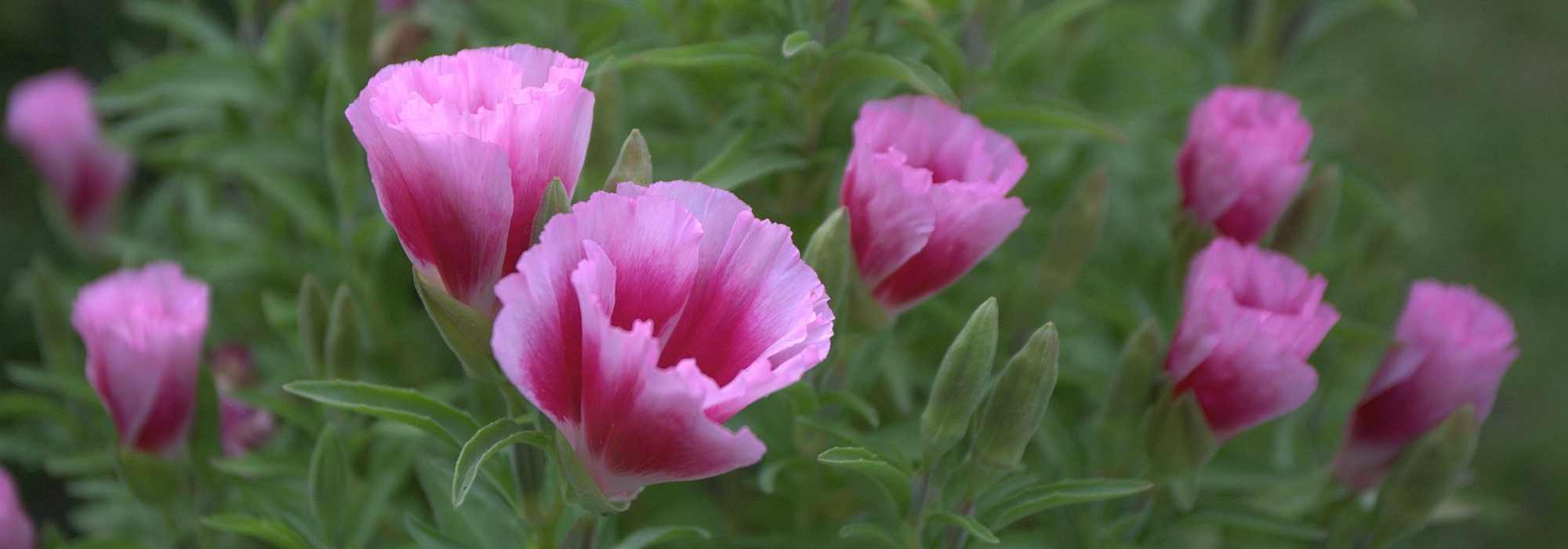
Godetia : sowing, growing, maintenance
Contents
Godetia in a nutshell
- It is a charming annual plant that flowers abundantly from June to September
- It produces beautiful satin trumpet flowers in soft or vibrant colours
- Its flowering is full of charm, both in the garden and in a vase
- Very easy to grow, it can be sown directly in place in spring
- Crowned with butterflies and other pollinators, it is perfect for decorating the foreground of borders, edges, and pots
A word from our expert
The Godetia, now commonly referred to as Clarkia, is a lovely annual plant that produces trumpet-shaped flowers, either single or double, resembling azaleas, which is why it is nicknamed the “satin flower”. The generous flowering lasts from May until the first frosts, brightening your borders, beds, balconies, and terraces with its vibrant colours. The flowers are mostly available in pastel shades, showcasing all hues of pink, purple, and white.
It forms lovely vigorous and bushy clumps in a single season, reaching about 50 cm in height and 30 cm in width. It adds lightness and a lovely pastel touch to flower beds and has the advantage of flowering late into summer if care is taken to remove faded inflorescences.
Easy to grow, it thrives in full sun, in well-drained, rather cool garden soil. Although perennial and hardy in its native country, it is used as an annual in our climates.
Godetia seeds are sown directly in place in the garden or in pots in spring.
Clarkia grandiflora or Godetia with azalea-like flowers, discover this highly floriferous and rewarding plant!
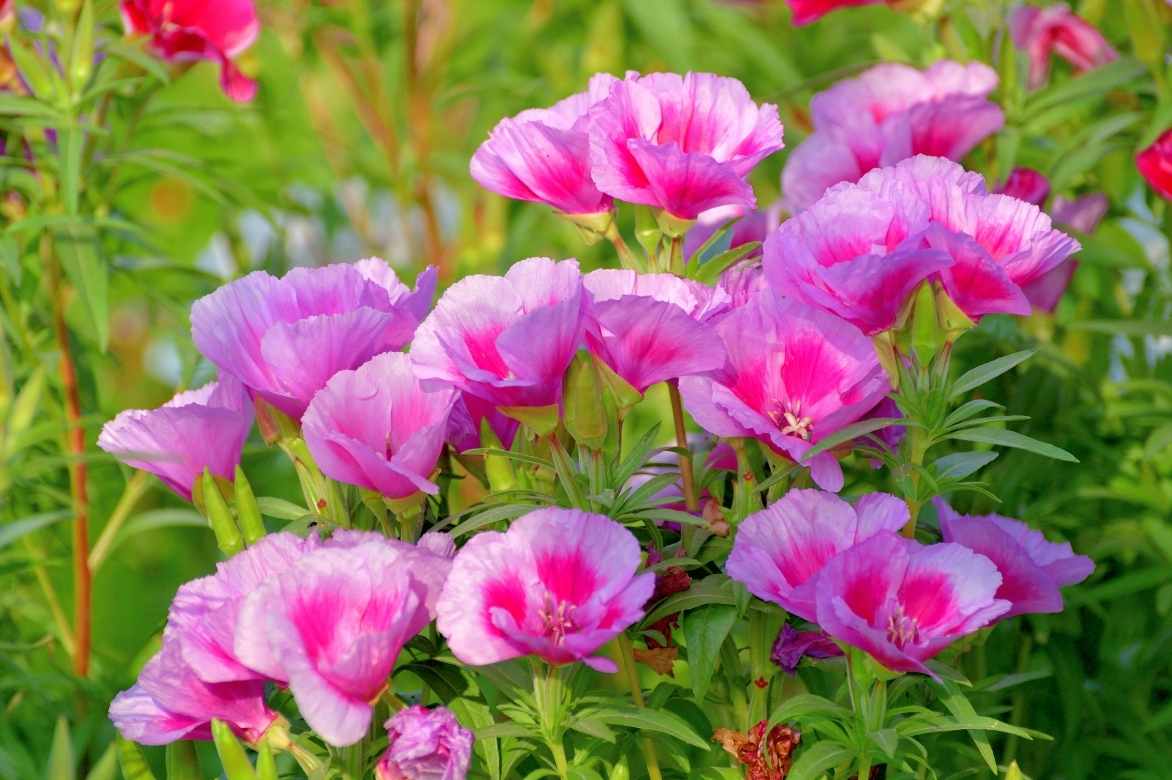
Godetias, a charming flowering with soft tones
Description and Botany
Botanical data
- Latin name Clarkia
- Family Fabaceae
- Common name Godetia, Satin flower
- Flowering May-June to September-October
- Height 0.20 to 0.70 m
- Exposure Sun
- Soil type Light, cool, well-drained
- Hardiness Frost-sensitive
The Godetia, now known as Clarkia and sometimes referred to as the “satin flower,” is an annual plant that was once very common in flower gardens across North America. The Godetia belongs to the Onagraceae family, just like the gaura and fuchsia. Native to California, it grows spontaneously in meadows, forest edges, or rocky slopes. It is now related to the genus Clarkia, which makes it akin to its cousin, the Clarkia, with which it shares close ties.
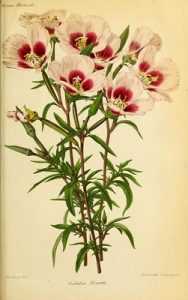 Godetia niverti, botanical plate (circa 1850)
Godetia niverti, botanical plate (circa 1850)
The genus includes around forty species, alongside the widely cultivated Godetia (Clarkia amoena), which has produced numerous cultivars. Also cultivated is the Clarkia unguiculata (elegans) or elegant clarkia. The many varieties enhance the forms and colour palette.
From a taproot, the plant forms a vigorous, upright, and bushy clump with a highly branched silhouette, reaching an average height of 0.50 to 0.80 m and a width of 30 cm in one season. There are adorable dwarf forms, very compact, that do not exceed 25 cm in height. The foliage is dense. The fine, branched stems from the base of the clump bear small, green, alternate leaves that are elongated, elliptical, and lanceolate with margins that are sometimes irregularly dentate.
The exuberant flowering displayed in soft, fruity, and varied shades is irresistibly charming, largely concealing the foliage. Of rare generosity, it spreads from May to September, depending on the sowing date, and renews itself throughout the summer. The Godetia or Clarkia offers simple or double to semi-double funnel-shaped flowers. They bloom at the ends of the stems, gathered in pendulous then upright bouquets. They open into flared and turbinate trumpets, 2 to 4 cm in diameter, composed of 4 silky petals (for the simple varieties), sometimes slightly plicate, hence its nickname “satin flower.”
White, carmine pink, peach pink, apricot, red, lilac, violet, solid, bicoloured, or variegated, they offer an infinite array of vivid or pastel colours. The throat, widely flared, is often maculate and enhanced with a coloured halo. Each flower seems painted, and some fully double ones resemble those of azaleas.
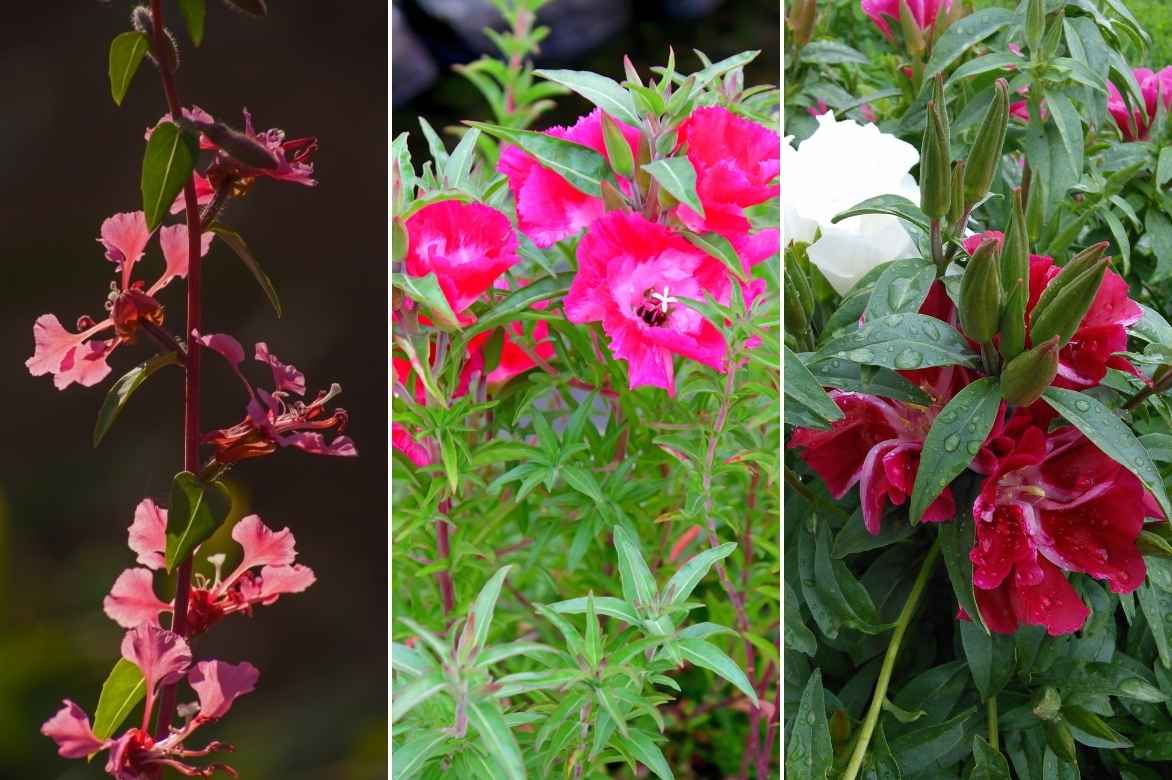 Clarkia unguiculata, Clarkia amoena, and Clarkia pulchella
Clarkia unguiculata, Clarkia amoena, and Clarkia pulchella
These satin flowers make excellent cut flowers for creating lovely bouquets and are highly sought after in floristry.
Melliferous, this endless flowering attracts a large number of foraging insects, particularly bees and butterflies, which delight in it throughout the summer.
These inflorescences give way to capsule fruits that release numerous seeds at maturity, which are likely to produce spontaneous sowings in light soils.
Main species and varieties
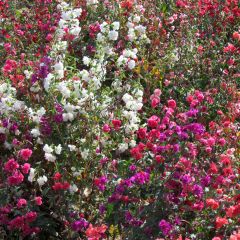
Clarkia unguiculata Excellent Mix Seeds - Mountain Garland
- Flowering time July to October
- Height at maturity 50 cm

Clarkia unguiculata Apple Blossom
- Flowering time July to October
- Height at maturity 60 cm
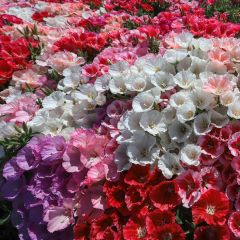
Godetia amoena
- Flowering time July to October
- Height at maturity 55 cm
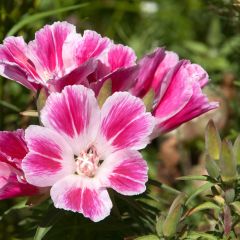
Godetia Rembrandt Seeds - Clarkia
- Flowering time July to October
- Height at maturity 50 cm
Discover other Godetia seeds
View all →Available in 1 sizes
Available in 1 sizes
Available in 1 sizes
Available in 1 sizes
Available in 1 sizes
Available in 1 sizes
Available in 1 sizes
Available in 1 sizes
Available in 1 sizes
Sowing and planting of Godetia
Where to sow Godetia?
The satin flower is a tender plant that will be grown as an annual in our temperate climates. Very floriferous and with a rapid growth, it needs a sheltered position from the wind to protect its brittle stems, and very sunny to flower well. In the south of our country, it will tolerate partial shade.
It appreciates slightly acidic, loose, fresh to dry but well-drained soil and does not like conditions that are too hot or too humid.
Install this charming annual plant on balconies and terraces, in window boxes or pots. The excellent hold of its flowers also allows for planting in the garden to form lovely ephemeral borders of perennial or annual beds, or to enchant flower beds and rockeries.
As it is a very melliferous plant, it can also be sown within the vegetable garden to improve the ecosystem and feed the reserve of flowers for bouquets.
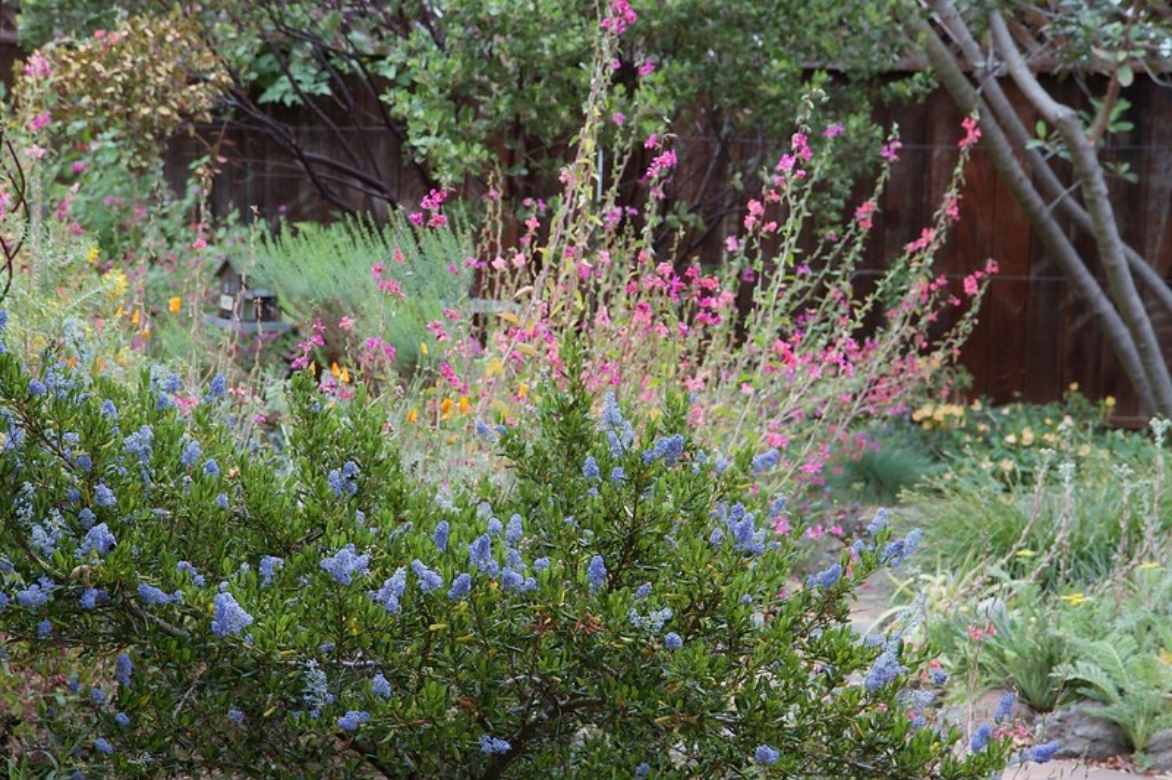
Clarkia elegant and Ceanothus ‘Skylark’ (© Jkehoe Photos)
When and how to sow Godetia seeds?
The seeds of Godetia are sown in spring, from April to May, directly in place, after all risk of frost, for flowering from July to September. Sowing in March is possible in mild regions. Young Godetia plants have difficulty tolerating transplanting, so direct sowing is preferable. Neither thinned nor transplanted, they manage on their own! Remember to stagger your sowings until June to prolong the flowering period.
Sow in place
- Prepare the soil well to a depth of half a spade to loosen it
- Sow in clusters of 2 to 3 seeds per hole at a depth of 3mm, spacing them 25cm apart
- Add a good amount of compost to each planting hole and add a bit of river sand to improve drainage
- Fill and firm
- Water
- Keep the substrate moist until germination
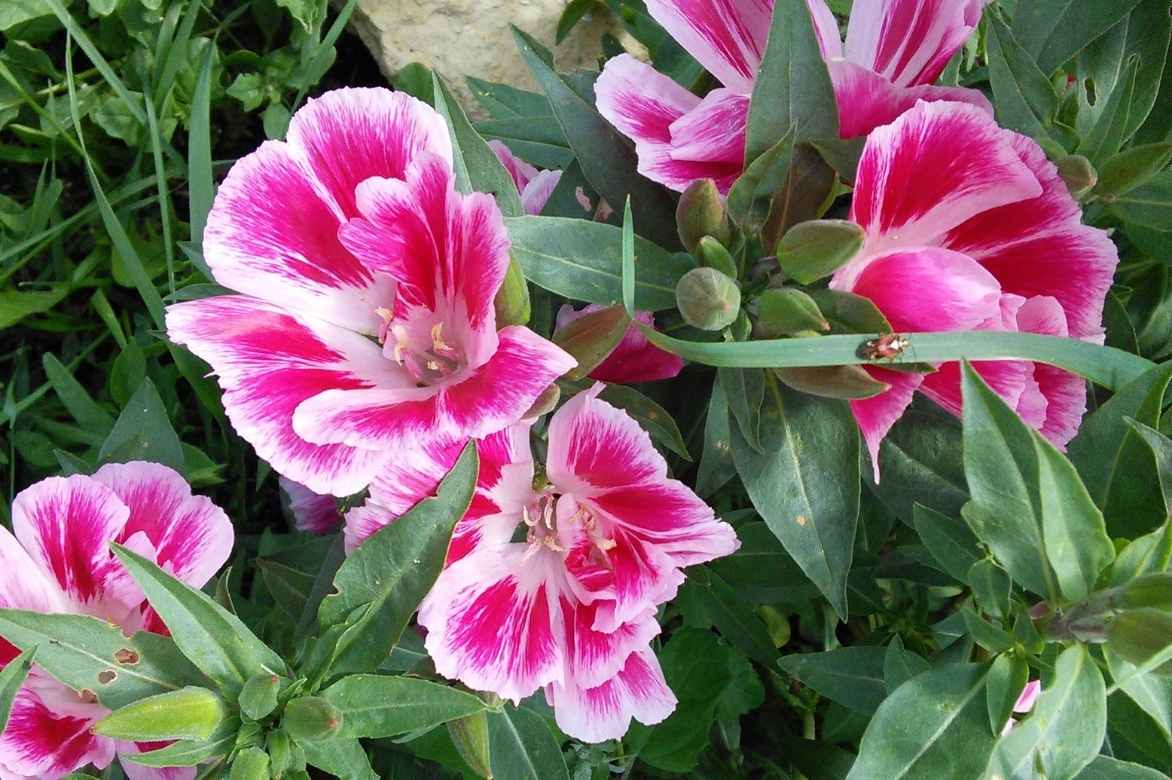 Clarkia pulchella
Clarkia pulchella
Sow in pot
For earlier flowering, you can sow indoors directly in pots or trays in good seed compost. This type of sowing is also possible outdoors after frosts.
- In a pot with a depth of 40 cm, spread gravel or clay balls
- Fill the container with a mixture of seed compost, well-decomposed compost, and garden soil
- Sow sparsely or in clusters of 3 seeds
- Water and keep moist until germination
- Place outside when all risk of frost has passed
→ Learn more in our tutorial: How to sow Clarkia?
Cultivation and care
The Godetia is a very floriferous and generous annual plant that requires very little care.
Watering should be regular, especially during hot and dry weather, but not excessive, as too much water can cause root rot. In pots, it will require more water, as the substrate dries out faster than in open ground. Always allow the soil to dry out a bit between waterings. Spread a mulch at the base to limit evaporation.
During growth, about once a month, provide a little fertiliser for flowering plants. A soil that is too rich encourages leaf growth at the expense of flowering, so be light-handed.
In a garden exposed to wind, stake the taller cultivars. Regularly remove faded flowers to prolong flowering. Allow it to seed if you wish to let it self-sow naturally.
In sufficiently drained soil, the plant is resistant to diseases.
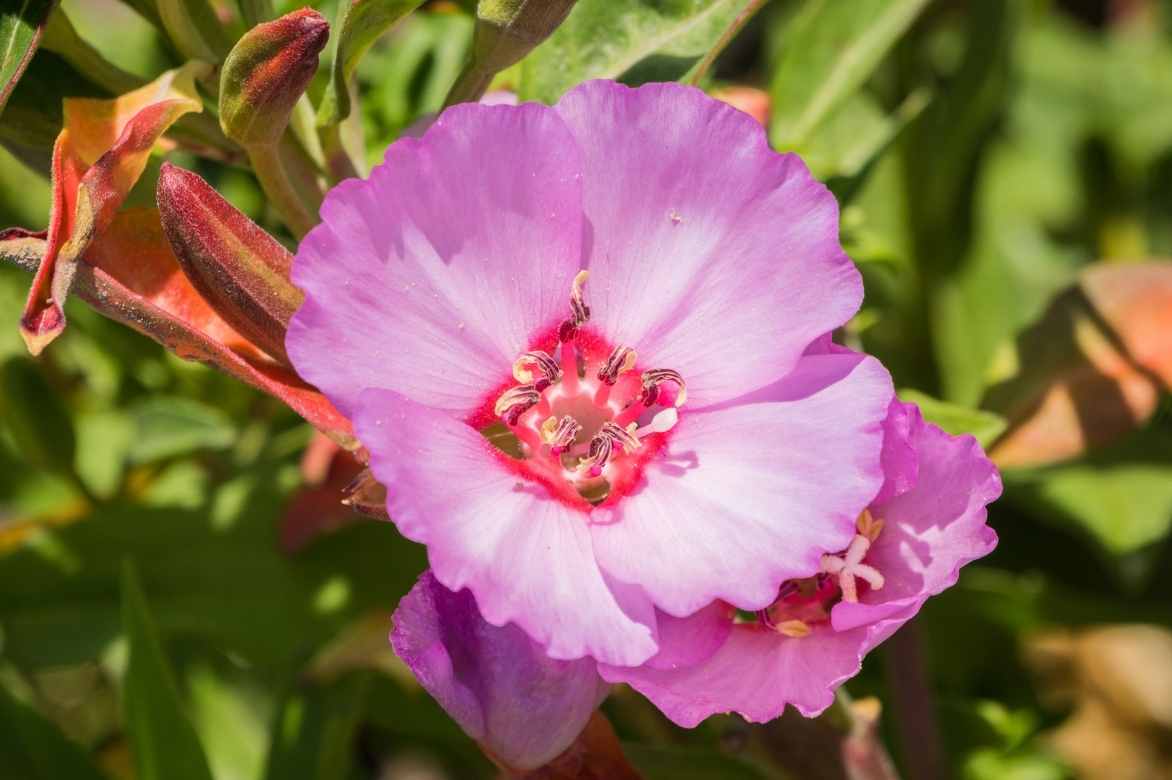
Clarkia rubicunda
Multiplication
To multiply your satin flowers, you can collect the seeds to sow them the following spring; it’s as simple as following our sowing tips mentioned above.
Associate the godetia
With its trumpet-shaped flowers in fruity or soft colours, Godetia is one of those essential annual plants for pots, window boxes, flower beds, or summer borders. Its floribundity allows for interesting combinations with many other annual plants or perennials. It ensures a beautiful flowering season! It is easy to integrate into natural or naturalistic gardens, country gardens, and English cottage gardens or romantic gardens. It adds a rustic charm to all compositions.
In a large summer romantic flower bed, with white or pink roses and lavateras in the background, it will easily combine with other charming annuals in white or pink tones such as cosmos, Love-in-a-Mist, gypsophila, snapdragons, and dahlias in the same soft tones.
Complete the scene with beautiful airy perennials like asters, Hollyhocks, and Salvia nemorosa ‘Amethyst’ to create changing and lasting flower beds.
In a border, mix it with Ageratum, another annual plant with tender lavender-blue flowering, petunias, or Celosia ‘Flamingo Pink’, which are ideal for adding colour to borders.
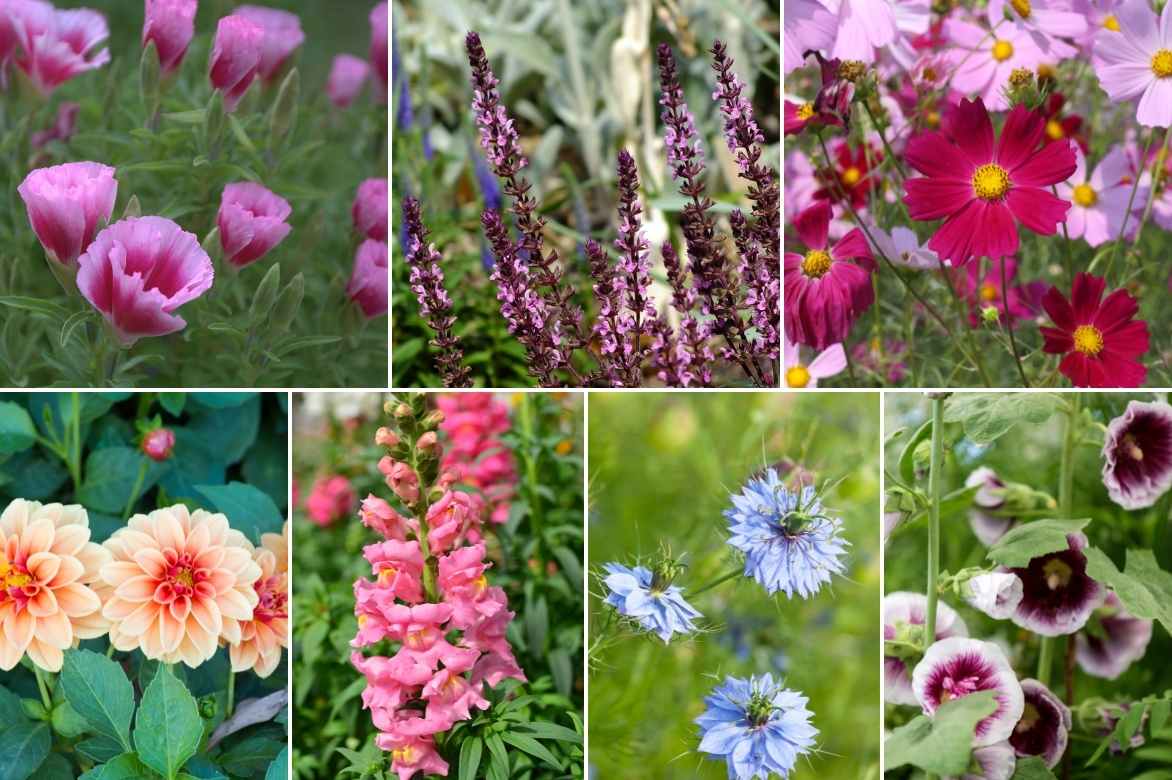
Godetia, Salvia nemorosa ‘Amethyst’, Cosmos, Dahlias, snapdragons, Love-in-a-Mist, and Hollyhocks
Useful resources
- Godetias are easy to pair: choose their companions from our unique collection of annual plants
- Discover our best ideas for flowering your balconies and terraces
- Annual plants quickly dress the space they are given: discover our solutions!
- Check out our 7 pairing ideas to create beautiful summer planters
- Subscribe!
- Contents































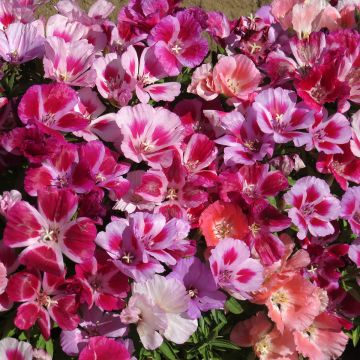

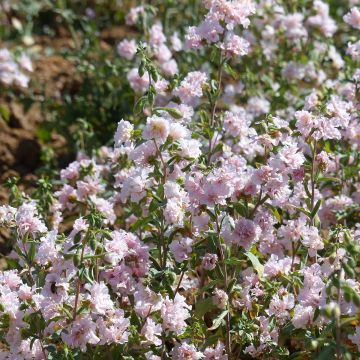
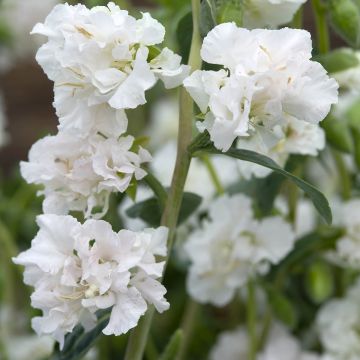
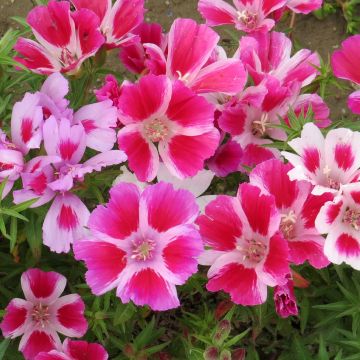
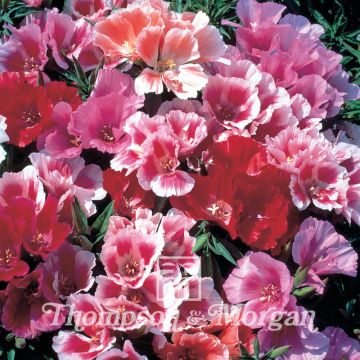




Comments